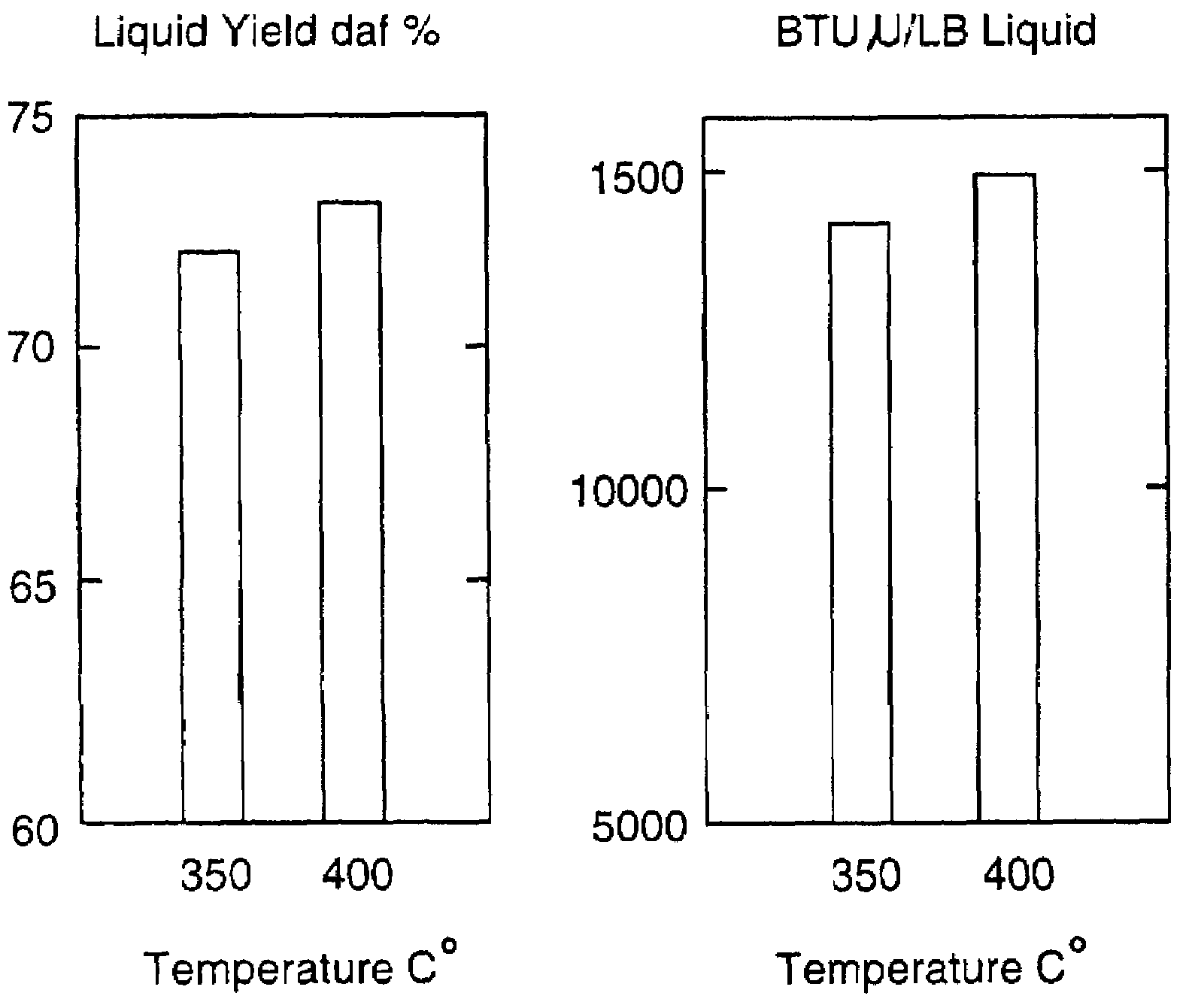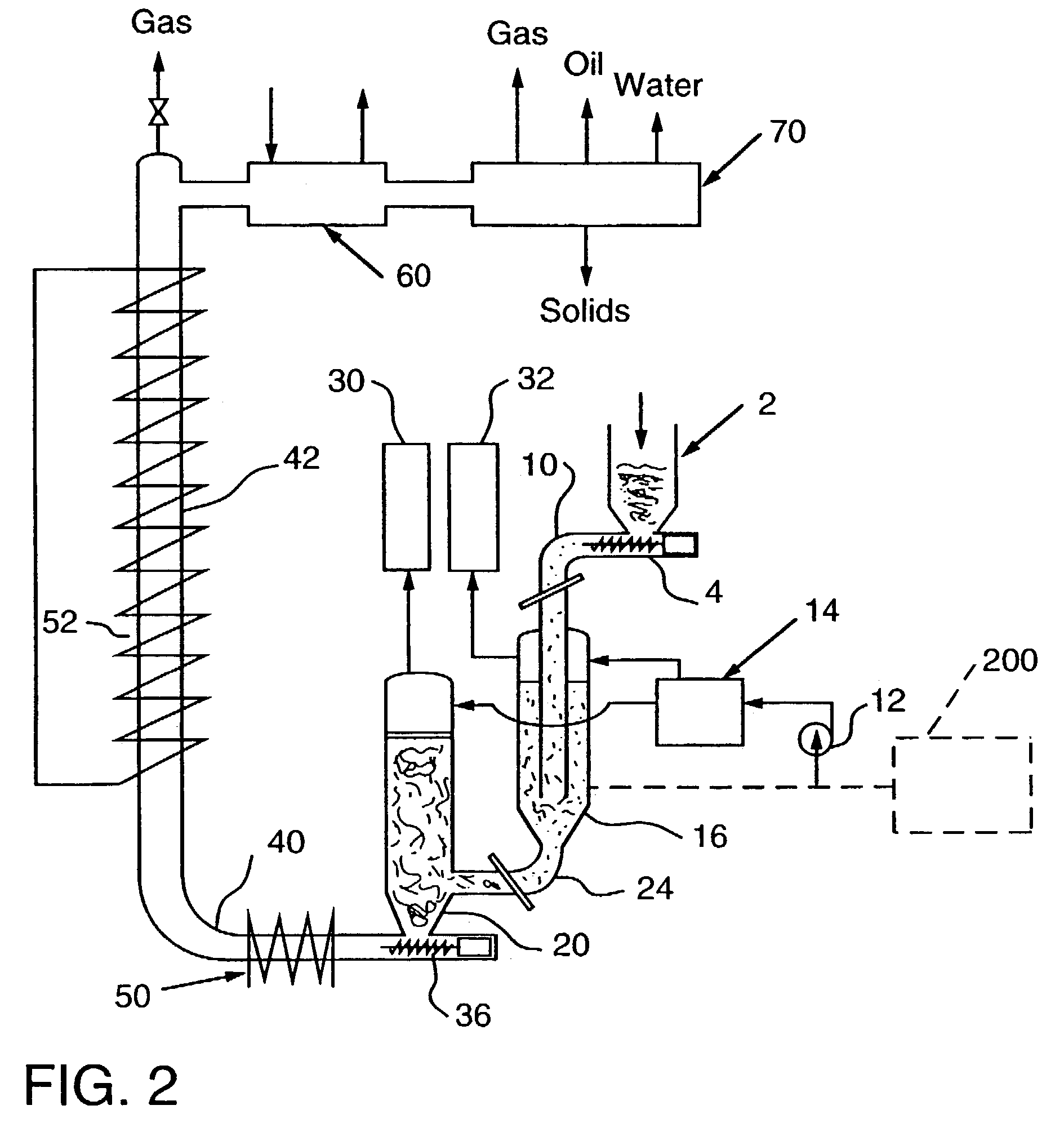Method of converting agricultural waste to liquid fuel cell and associated apparatus
a technology of agricultural waste and liquid fuel cell, which is applied in the direction of fuels, pressurized chemical processes, supercritical conditions, etc., can solve the problems that the conversion of wastes to coal did not improve, and achieve the effects of enhancing the energy value of original manure, facilitating generation, and eliminating undesirable manure odors
- Summary
- Abstract
- Description
- Claims
- Application Information
AI Technical Summary
Benefits of technology
Problems solved by technology
Method used
Image
Examples
second embodiment
[0042]In performing the following experiments, the primary focus was placed on certain reaction conditions. The reaction conditions in question refer to the temperature, pressure, gas composition, reaction time and the amount and type of catalyst, if any, to be used. The parameters found to be the most sensitive to changes, are systematically altered for optimization. These parameters are the temperature, the reaction time and the amount of catalyst. In the invention, hydrogen gas, which can be rather expensive, is not employed and water is employed as the reactant and hydrogen donor. A statistically designed set of experiments were carried out, where these parameters were systematically varied. In this way, optimal conditions for these parameters can be determined without carrying out runs at all combinations of all the parameters.
[0043]All the reactant used was taken from the same sample of hog manure. The sample was sufficiently large that uniform properties can be assured. The p...
first embodiment
[0046]In one embodiment of the present invention, after the feedstock is loaded into the reactor, the air will be replaced with the gas-phase mixture, which may be hydrogen, at the pressure of interest. The tube reactor may be designed for pressures of the gas as high as 1000 psi at room temperature, though, in the first embodiment, we use values around 100 psi. The reactor will then be clamped to a vibration apparatus and lowered into a fluidized sand bath operated such that the reactor temperature rapidly approaches the reaction temperature, typically around 350° to 400° C.
[0047]After the desired time period, generally about 15 to 90 min., the reactor will be raised from the sand bath and removed from the vibration apparatus. The reactor will be cooled to room temperature, after which the gas contents will be removed to an evacuated glass bulb of known volume. Aliquots will be injected into a gas chromatograph, to determine the gas composition quantitatively. The remaining content...
third embodiment
[0066]It will be appreciated that the present invention has provided methods and apparatus for convert agricultural waste, such as animal manure, into a usable fuel in an efficient, economical manner. In one embodiment, hydrogen gas is admixed with agricultural waste and processed in accordance with the present invention. In another embodiment, water is admixed with agricultural waste for such processing, and, in a third embodiment, both hydrogen gas and water are admixed with the agricultural waste for such processing. When water is used, it is preferred, but not necessary that it be supercritical water, with the water serving both as a reactant and a source of hydrogen.
PUM
| Property | Measurement | Unit |
|---|---|---|
| weight percent | aaaaa | aaaaa |
| temperature | aaaaa | aaaaa |
| temperature | aaaaa | aaaaa |
Abstract
Description
Claims
Application Information
 Login to View More
Login to View More - R&D
- Intellectual Property
- Life Sciences
- Materials
- Tech Scout
- Unparalleled Data Quality
- Higher Quality Content
- 60% Fewer Hallucinations
Browse by: Latest US Patents, China's latest patents, Technical Efficacy Thesaurus, Application Domain, Technology Topic, Popular Technical Reports.
© 2025 PatSnap. All rights reserved.Legal|Privacy policy|Modern Slavery Act Transparency Statement|Sitemap|About US| Contact US: help@patsnap.com



